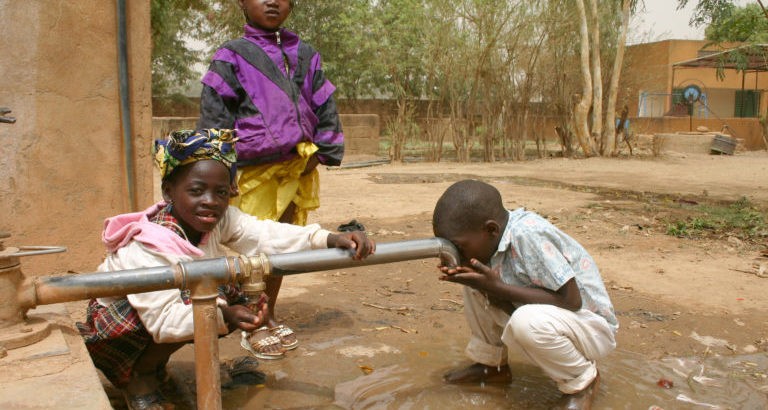Note: This post was originally published on the Global Handwashing Partnership blog.
Handwashing with soap and clean water prevents diseases from spreading from the hands to the mouth. Vaccines save lives by preventing pathogens from causing illness.
For a disease such as typhoid, where bacteria from hands can contaminate food and water and cause illness, we need both water, sanitation, and hygiene (WASH) and vaccines to control it successfully. But to ensure these tools reach all communities and effectively control disease transmission, we need more coordination.
Typhoid: A disease of sanitation
Spread via the fecal-oral route through contaminated water and food, typhoid is estimated to have caused nearly 11 million cases and more than 116,000 deaths worldwide in 2017. It used to be a global disease, but after improvements in water and sanitation infrastructure in high-income countries during the last few centuries, the typhoid burden is now mostly found in low- and middle-income countries in Asia and sub-Saharan Africa. Typhoid thrives in settings where water and sanitation infrastructure—e.g., sewer systems, water treatment facilities, and well maintained pipelines—are in disrepair or lacking completely. Typhoid continues to spread when communities struggle with a lack of access to clean water and sanitation facilities, which makes handwashing and other hygiene behaviors difficult to employ consistently. Eroded, insufficient, and overused pipes, wells, toilets, and sewage systems allow contaminated fecal matter to seep into pipelines and water supplies, forcing families to use unsafe water for drinking, cooking, and bathing. Improvements are sorely needed.
Vaccines work
As much as it is needed, improving WASH infrastructure is complicated and expensive. This problem has led many typhoid control experts to support a readily available and effective solution: typhoid vaccines. During the last few years, momentum for typhoid vaccination has accelerated with the availability of a new WHO-prequalified typhoid conjugate vaccine (TCV), a huge step forward for the protection of young children against the disease.
Vaccines offer a necessary near-term solution for typhoid control while governments and communities continue to work on WASH improvements. But the opportunity to introduce TCV doesn’t mean we can forget about WASH. Typhoid will continue to lurk in the pipes.
Merging sectors
In order to take on typhoid, diarrheal disease, and other waterborne pathogens, we need both vaccines AND improvements in WASH. While vaccination can save and improve lives now, long-term investments in WASH infrastructure will create a future where typhoid and other diseases are removed from the water altogether, effectively ending the risk of falling ill.
That future needs to start now. The momentum for new typhoid vaccines provides an opportunity to start building a more integrated approach for typhoid control. By integrating WASH behaviors into vaccination programs, encouraging diverse sectors and government ministries to collaborate, and advocating for integrated solutions, we can start to change the paradigm—not just for typhoid, but for diarrheal disease, cholera, and other waterborne diseases. Health is comprehensive and multifactorial, and health solutions need to be, too.
A pipeline of promise
By identifying opportunities to strengthen the coordination between the health and WASH communities, we can develop new, innovative solutions to tackle diseases of poverty. One imminent example is the current initiative for WASH in health care facilities, which is the subject of a resolution passed at this year’s World Health Assembly. The resolution will encourage all countries to assess and develop plans to improve the availability of clean water and sanitation in health care facilities—a goal that will require coordination between the health and WASH sectors.
Yes, we need to improve actual water and sewer pipelines. We also need to continue to strengthen the development and introduction pipeline of vaccines for waterborne diseases. But to start building a more integrated approach to health, we need to create, strengthen, and reconnect the figurative pipeline of collaboration between the health and WASH communities. It has remained fractured and buried for far too long.



